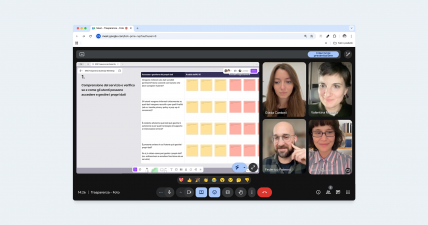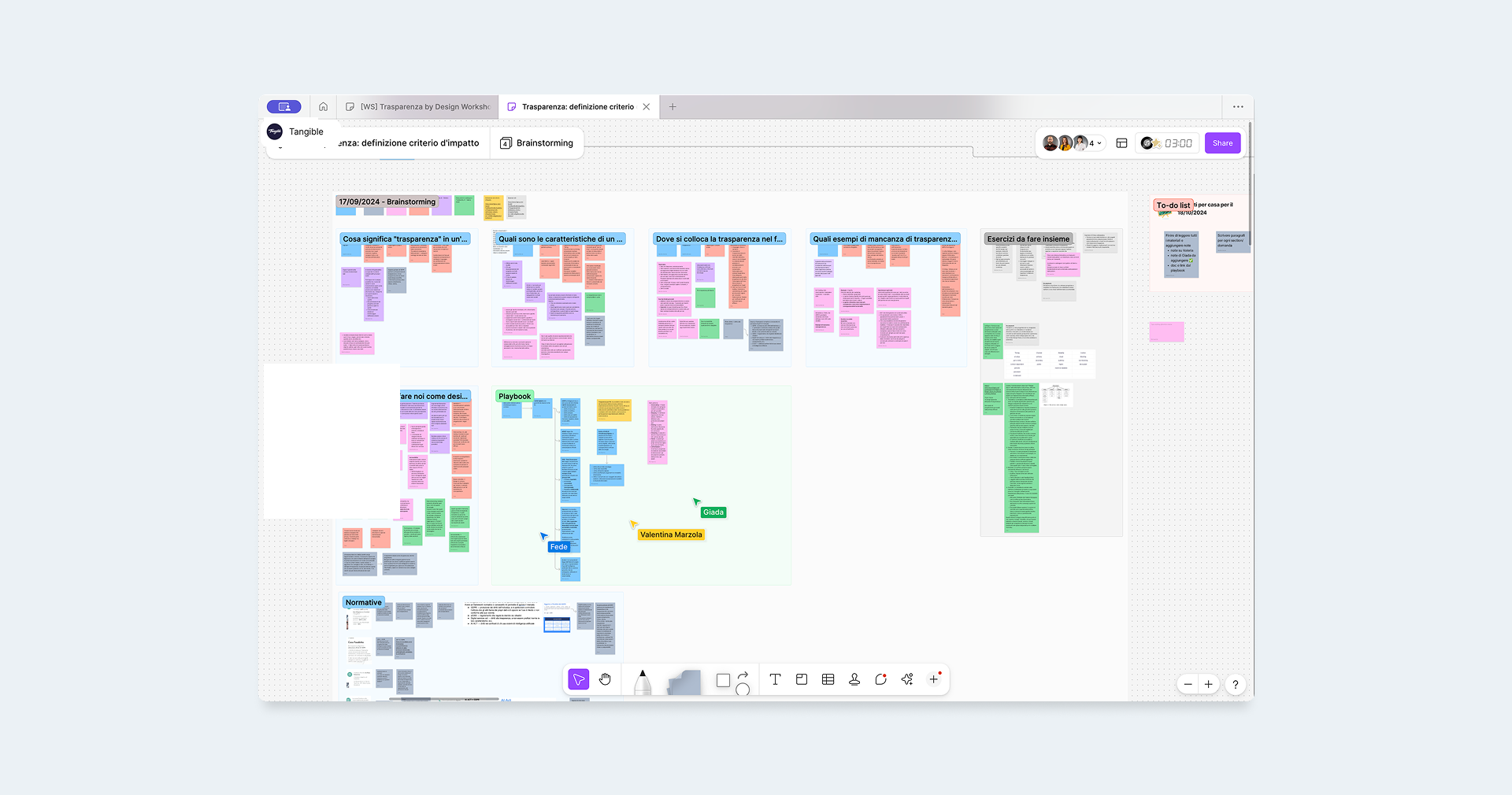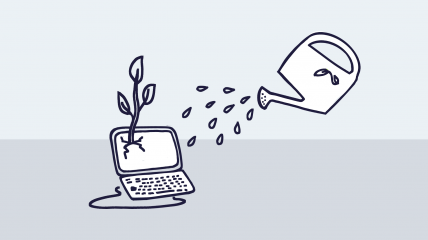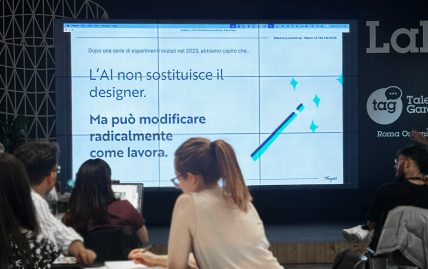Thinking
From workshop to the future of transparency
After outlining the context and structure of the workshop, it’s time to look at the benefits that have emerged and the perspectives shaping its evolution.

We’ve seen how transparency can become a practical exercise that brings designers, legal experts, and stakeholders together from the earliest stages of a project.
In this second part, we’re sharing what we’ve learned in practice, the conflicts we’ve resolved together and the next steps we’re taking.
This isn’t a step-by-step account, but rather a narrative look at how transparency strengthens trust and opens the door to new challenges,including those emerging in projects that integrate artificial intelligence.
The principles that make transparency tangible
When we designed the workshop, we decided to follow a few core principles.
Our goal wasn’t just to check whether a privacy policy existed, but to understand how transparent an experience truly feels for people.
To do this, we built upon principles that guided both the design and the evaluation framework:
- Clarity above all. Legal language should give way to simple phrasing, concrete examples, and microcopy that users can understand instantly
- Information, just in time. It should appear exactly when and where it’s needed in the user journey - useful, not intrusive
- Context-aware transparency. A notification on a smartwatch shouldn’t look the same as one on a desktop
- Control and manageability. Giving users the ability to view, change, or revoke their choices easily is an essential part of transparency
- Intentional friction. Sometimes slowing users down is the right choice: it gives them a moment to reflect before taking risky actions, such as sharing sensitive data or accepting profiling
- Explainable AI. Whenever algorithms influence an outcome, we must clearly say so, explaining how they work and where their limits lie
These principles helped us build a framework for assessing transparency that goes beyond legal compliance and focuses on its impact on the user experience.
Why this workshop makes a difference
Like every framework we create, we expect this one to evolve over time.
Its effectiveness will depend on how much we use it and on how quickly the questions it raises become part of our everyday design mindset.
We’re confident it can bring real benefits, and we’re already seeing some of them emerge.
It builds shared awareness
Everyone can clearly see where the experience feels opaque and where it communicates effectively.
It’s a moment when the team stops assuming that “users will figure it out.”
It turns an obligation into a design opportunity
Transparency stops being a deliverable handed off at the end of a project and becomes a quality criterion, one that improves UX and strengthens user trust.
It surfaces and resolves conflicts collaboratively
Legal teams often fear losing precision; marketing teams fear losing conversions.
In the workshop, these tensions are discussed openly until shared solutions emerge that respect everyone’s needs.

Looking ahead: transparency and artificial intelligence
This first version of the workshop was our initial step toward making transparency a concrete criterion for assessing impact.
But it’s just the beginning.
We’re now exploring how this approach can be applied to AI-driven projects, where transparency becomes even more critical, helping explain how decisions are made, making system limitations and biases visible, and giving people the ability to control or challenge outcomes.
In the coming months, we’ll keep experimenting and sharing what we learn. Because in the age of AI, transparency is what allows people to trust what we build.
Want to join the conversation?
We decided to share this workshop openly with the community because we believe new ideas can only grow through dialogue.
Transparency is, after all, a shared commitment.
Tell us how you’re applying it in your own projects and help us evolve this workshop. Every experience can become a valuable piece in building collective trust.


